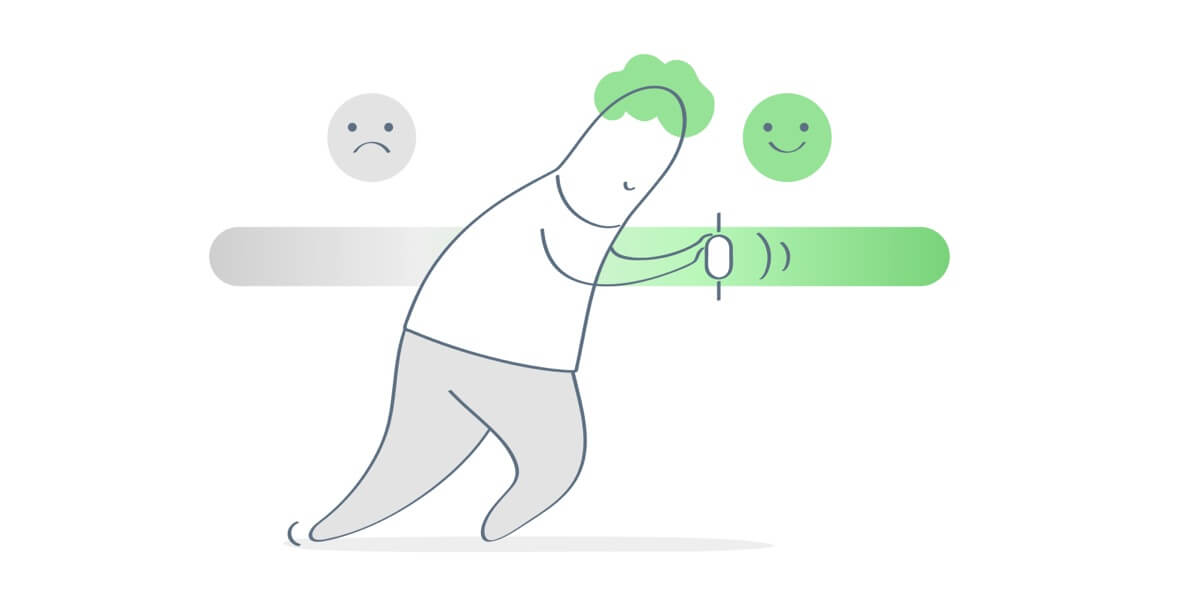As quit rates have soared to historic highs during the Great Resignation, employers have been grappling with how to get workers to stay on the job. And the answer could be as easy as this: Just ask them in stay interviews.
Among employee retention tactics, stay interviews fall near the bottom of the list, according to the 2021 Nonprofit Talent Retention Practices Survey by Human Resources firm Nonprofit HR. Just 28% of respondents’ organizations conducted stay interviews in 2020, this research found. By comparison, 72% held exit interviews when employees were already on their way out.
But employee turnover is costly, and labor shortages continue. More than two years into the COVID pandemic, the US Bureau of Labor Statistics (BLS) counted 11.3 million job openings in May 2022, up from 6.9 million in pre-pandemic February 2020. And these kinds of numbers are driving more employers to expand their rosters of employee engagement and retention strategies to include stay interviews.
“Finding new talent can end up costing organizations three to four times the salary of that position when you factor in recruitment costs, lost productivity, and any temporary replacement work,” said Jenna Estlick, Vice President of Human Resources Interim Solutions at HR and recruiting firm Versique. “Stay interviews can help prevent turnover if done correctly and the feedback is implemented.”
Here’s how to implement effective stay interviews — and how they can benefit your organization and its people.
What Are Stay Interviews?
Stay interviews are one-on-one meetings with employees and their manager or an HR team member to assess why an individual remains on the job, what they enjoy, and what could be improved. Of all the retention tools HR teams can turn to — from engagement surveys to loyalty programs — stay interviews may be among the easiest to implement.
“While the vast majority of companies don’t have a formal retention strategy at all, stay interviews are low-hanging fruit that can be used to mitigate dissatisfaction, disengagement, and ultimately, departure,” said Lisa Brown Alexander, President and CEO of Nonprofit HR.
The goal of stay interviews is to uncover and address what is not going well and what challenges exist or may lie ahead, said Christine Render, founder and CEO of talent management firm ScaleUp Coaching and Consulting. And while some of those insights might turn up in routine one-on-ones or engagement surveys, employees may be less inclined to share their own concerns unless they are asked the right questions during stay interviews.
“Depending on their personality, depending on the culture of the company — what they think is okay or not, what the norms feel like to them — [employees] may not proactively volunteer that information,” Render said. “But, if asked, they might be more comfortable to do it.”
How Stay Interviews Add Value
Whatever questions are asked, the impact of stay interviews can cascade across an organization, boosting retention rates and sparking positive changes that improve the employee experience. Here’s how stay interviews can add value.
1. Workforce Retention
The growing interest in stay interviews comes as leaders begin to pay more attention to the individual employee experience, rather than a more big-picture interpretation of what all employees want, Render said. And with questions designed to suss out exactly what an employee loves, likes, and dislikes about their current position, employers can take proactive action — from revising an annoying workplace procedure to ensuring an employee gets the upskilling they desire — to keep individuals on the job.
And unlike an exit interview, which only catches departing employees, everyone is asked to participate in formal stay interviews, regardless of their apparent level of engagement. While managers might be inclined to assume employees are content based on verbal and nonverbal cues in day-to-day interactions, stay interviews force team leaders to dig deeper — ensuring it’s not just the squeaky wheels that get the grease.
“We do stay interviews both with heavily engaged employees as well as with those [who] seem to be lacking motivation,” said Pete Sosnowski, cofounder and former Vice President of online resume-builder and career website Zety.
2. Big-Picture Insights
With information gathered over time from across a workforce, stay interviews can capture problematic policies and experiences that may be on the verge of sparking attrition across teams or departments, or simply uncover small changes that will make groups of workers even happier.
At Narwhal Capital Management, an investment advisory firm, stay interviews have prompted leaders to update policies, such as parental leave, and gather ideas to bolster company culture, said Natalie Rogers, Narwhal’s Director of Human Resources and Operations. “Stay interviews give you a look into what you are doing great, why your best employees stay with you, and what could make an employee leave,” she said.
3. Better Engagement and Motivation
When done right, stay interviews can send a strong message to workers that they matter and their thoughts and ideas are taken seriously. They also can ensure that employees have the tools they need to thrive on the job — from the appropropriate training to the right work-life balance. That alone can bolster flagging employee morale.
“The simple act of conducting a stay discussion can boost a team member’s engagement because of the time and attention their leader is investing in them,” Render said. “Additionally, a stay discussion may be more meaningful to a team member because it is more customized than an employee engagement survey — it signifies their leader cares about them and their individual perspective.”
20 Stay Interview Questions
Stay interview questions can follow a variety of different directions, depending on the employee and the organization. Themes often cover career growth, workplace relationships, and manager support. Top stay interview questions, which business and HR leaders shared with us, include:
- What do you look forward to when you come to work each day?
- What do you like most or least about your role?
- Are you able to maintain a positive work-life balance?
- Do you regard your peers as friends, acquaintances, or just coworkers?
- If you could change something about your job, what would that be?
- Is there anything we can do to make you feel more safe at work?
- What would make your job more satisfying?
- What motivates (or demotivates) you?
- What talents or skills would you like to utilize more?
- How do you like to be recognized for your achievements?
- How much do you look forward to Fridays? Do you dread Mondays?
- Do you see yourself working here a year from now? In two years?
- How would you describe our company culture?
- Have you been provided with enough development opportunities?
- Have you been provided with a clear growth path?
- Do you feel your ideas and suggestions are given consideration?
- Do you feel your progression within the company is encouraged?
- Do you feel empowered to ask for support?
- If you could change one thing to improve morale, what would it be?
- How can the company be more transparent with employees?
Download our Stay Interview Template for more stay conversation prompts and questions.
Stay Interview Best Practices
While asking employees what they love about their job may be easy enough, employers can get stay interviews wrong if they don’t follow some best practices. Here are five that experts recommend.
1. Ask questions early.
Bill Catlette, partner at Contented Cow Partners, a leadership and employee engagement firm, recommended scheduling the first stay interview not long after a new hire has started on the job. An early stay interview can uncover issues in the onboarding process, sends a message to new employees that the employer cares, and sets the tone for a regular cadence of stay interviews in the future.
“The [employer-employee] relationship is particularly fragile in the very early days and weeks,” Catlette pointed out. “It’s much more likely to break [early on] than it is after two years. So I want to know what’s working for [employees] and what’s not [from the beginning].”
2. Make it a conversation.
Don’t bombard employees with dozens of questions all at once; most experts suggested asking only five to seven questions per stay interview. Interrogating workers may just turn them off. Catlette recommended focusing the time on creating a personable two-way conversation that encourages open communication.
“I generally start stay interviews with a clarification that this is a ‘happy discussion,’” Catlette said. “[I tell the employee] that I'm pleased to have them on the team and want to stay attuned to things that keep them here, and conversely, things that might convince them to consider leaving, so we can prevent that from happening.”
Render prefers to call them “stay discussions,” not interviews. Leaders should be prepared with effective questions, but avoid “stick-to-the-script tunnel vision,” she said. To gather truly valuable and actionable input, leaders must probe and ask follow-up questions based on the feedback the team member is sharing, Render advised. And team members should always be invited to raise topics and ask questions, too.
3. Take action.
Just as with any other type of effort to measure engagement, asking employees what they need — but then taking no action on that feedback — can breed distrust and disinterest among workers. After all, if they’ve taken the time to provide their insights, employees can become resentful if it appears that their efforts were in vain.
“Conducting stay interviews means action should be taken afterward,” said Estlick. “If a leader takes the time to research what improvements can be made to keep people on board and nothing happens, the results can be the opposite, creating friction within the workforce and making employees want to leave for lack of effort from the leadership team.”
And if you can’t make a requested change, explain why, advised Render. That transparency will go a long way in building employee trust.
4. Include it in your engagement strategy.
While weekly one-on-ones between managers and their direct reports can be used to diagnose retention risks on an ongoing basis, HR experts advised against relying on them as your sole measure of engagement. Honest, open dialogue about employee satisfaction and career trajectory doesn’t always fit into the typical (and often tactical) one-on-one agenda.
Karen Oakey, former Director of HR at Fracture, a photo finishing service, thinks of stay interviews and one-on-ones as complements to employee surveys. Most of the questions you ask during a stay interview would be out of place on an engagement or pulse survey. But while those formats give you fast, quantifiable results to analyze, stay interviews provide additional insights through an employee’s body language, tone, and other nuances that aren’t apparent in a survey. The medium also facilitates follow-up questions.
“This conversational format engages the employee to respond in an organic, authentic, and candid way,” Oakey said. “The conversational component makes it more effective than surveying alone.”
5. Involve HR.
Direct managers who have deep knowledge of their employees’ daily activities and needs often conduct stay interviews. Human Resources, however, may get more honest feedback.
Sarah Schoolcraft, Director of People Operations at data engineering, data strategy, and machine learning company phData, thinks HR teams are better equipped to ask tough questions because they don’t have a personal stake. What’s more, the conversation can help bolster the overall rapport between HR and the workforce, Schoolcraft said.
“I find that talking to someone who isn’t their manager, employees tend to be more open,” noted Schoolcraft. “Plus, I have learned so much about [employees’] day-to-day [experience], which really helps me better support everyone.”
—
If adding one more conversation with employees feels like too much to fit into your already busy schedule, Estlick recommended working stay interview questions into other conversations with employees. “You don’t have to make this an extra step or an extra process. Look for opportunities where you’re already connecting with your employees,” she said, such as during one-on-ones and performance reviews.
But especially now, as workers leave their jobs in droves and their needs and on-the-job expectations are rapidly shifting, Estlick stressed that finding out why your current employees are staying is more important than ever.
“Employees’ needs change over time,” she said. “Usually [that change is] slow, and companies can see what’s coming. But over the last couple of years, things have changed really quickly in terms of what’s important to employees and what expectations are. By having stay interviews or incorporating stay interview questions [into other interactions], companies can stay on top of the trends.”
Interested in trying out stay interviews at your organization? Download our Stay Interview Template.
* Sample stay interview questions provided by The Ecomm Manager, CouponLawn, NuLeaf Naturals, InternetAdvisor, Compass Commercial, PEO Compare, Zety, Running Shoes Guru, Call Outdoors, and SurveySensum.






